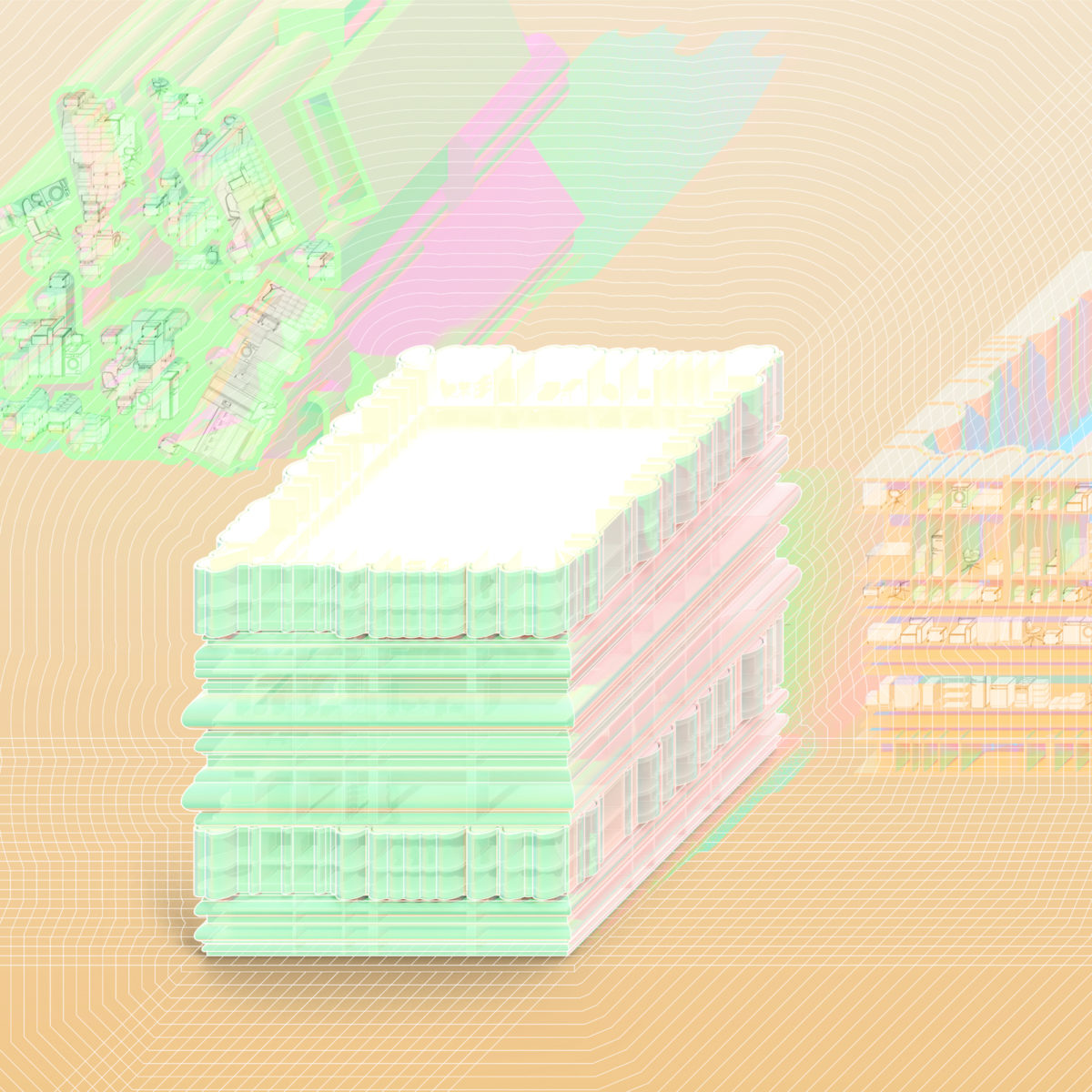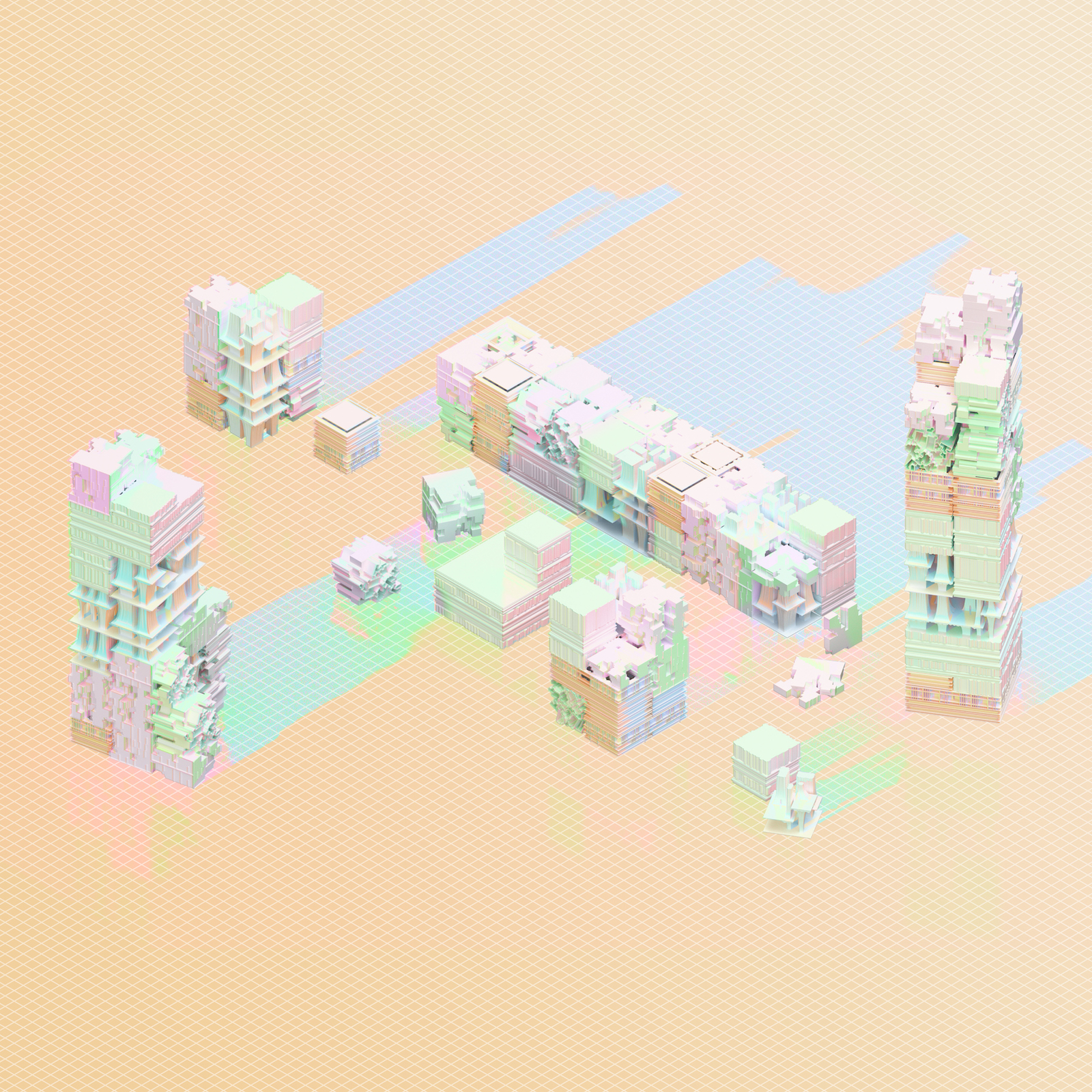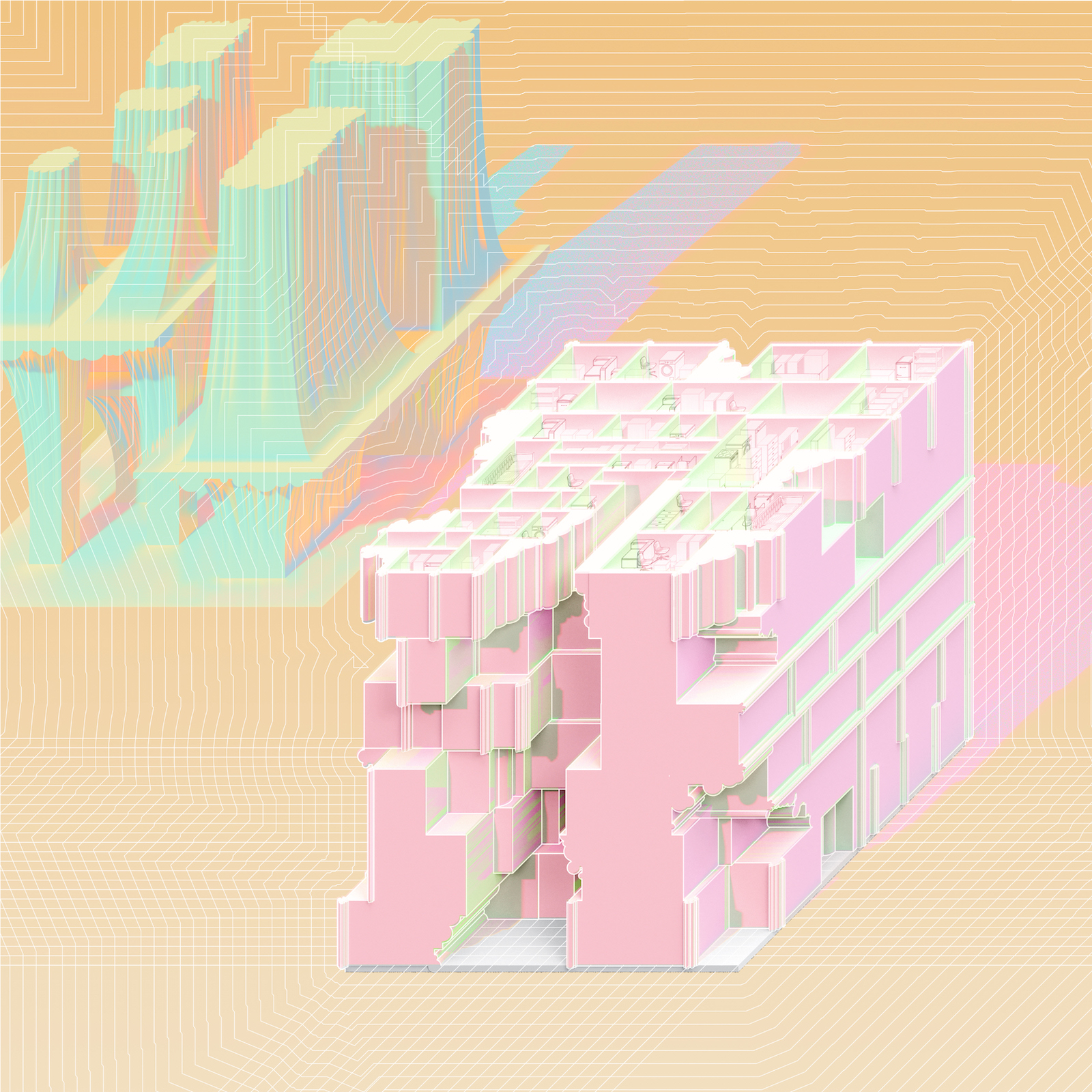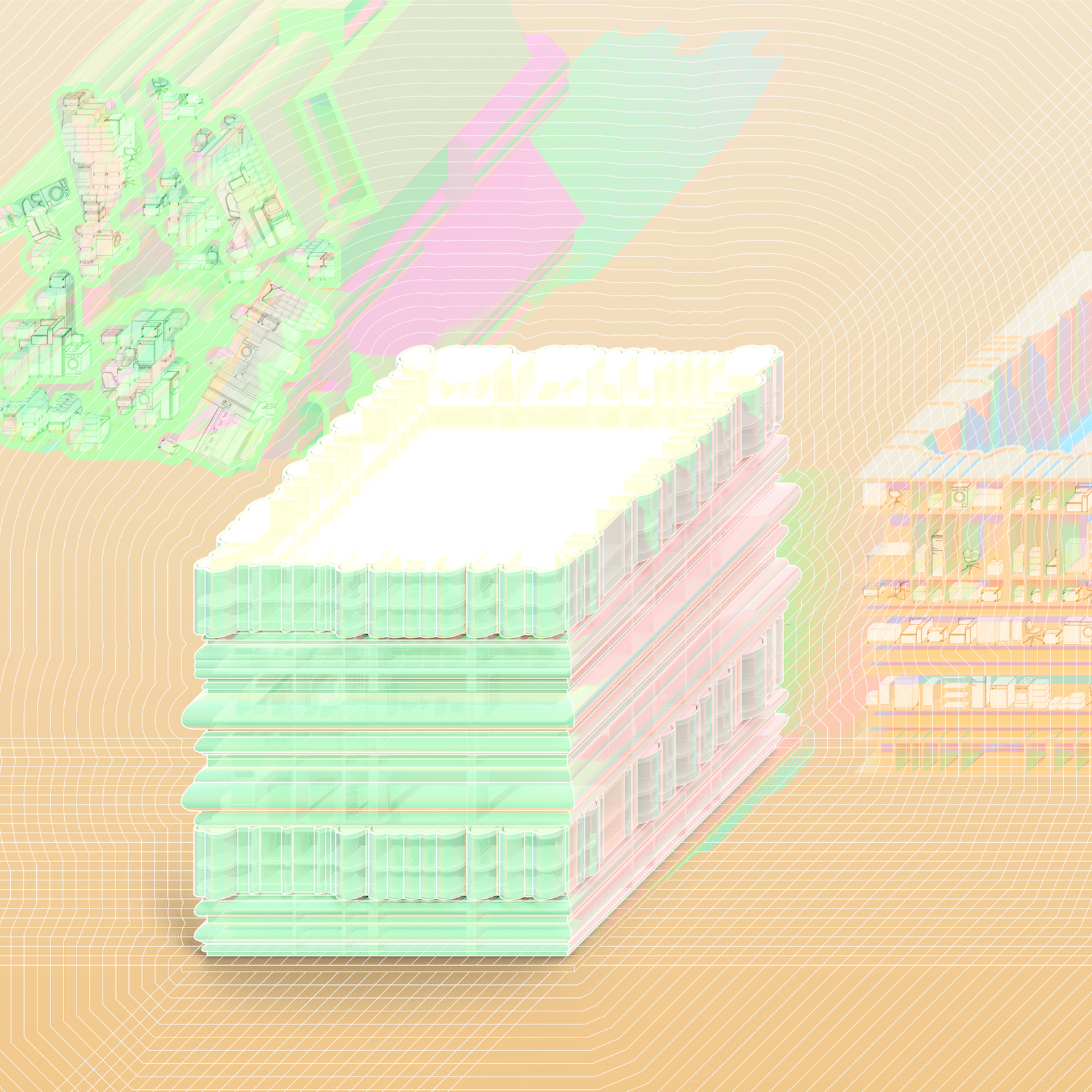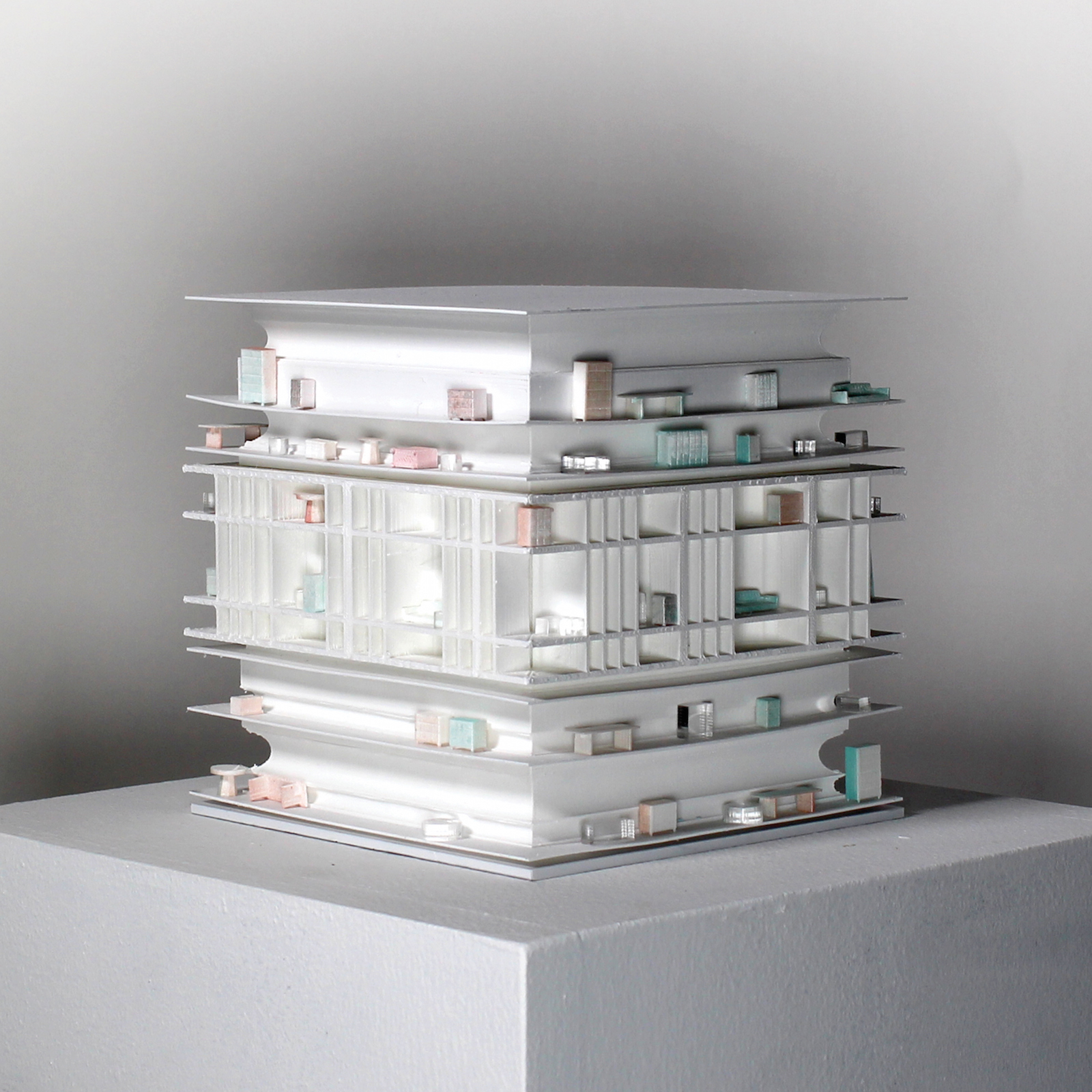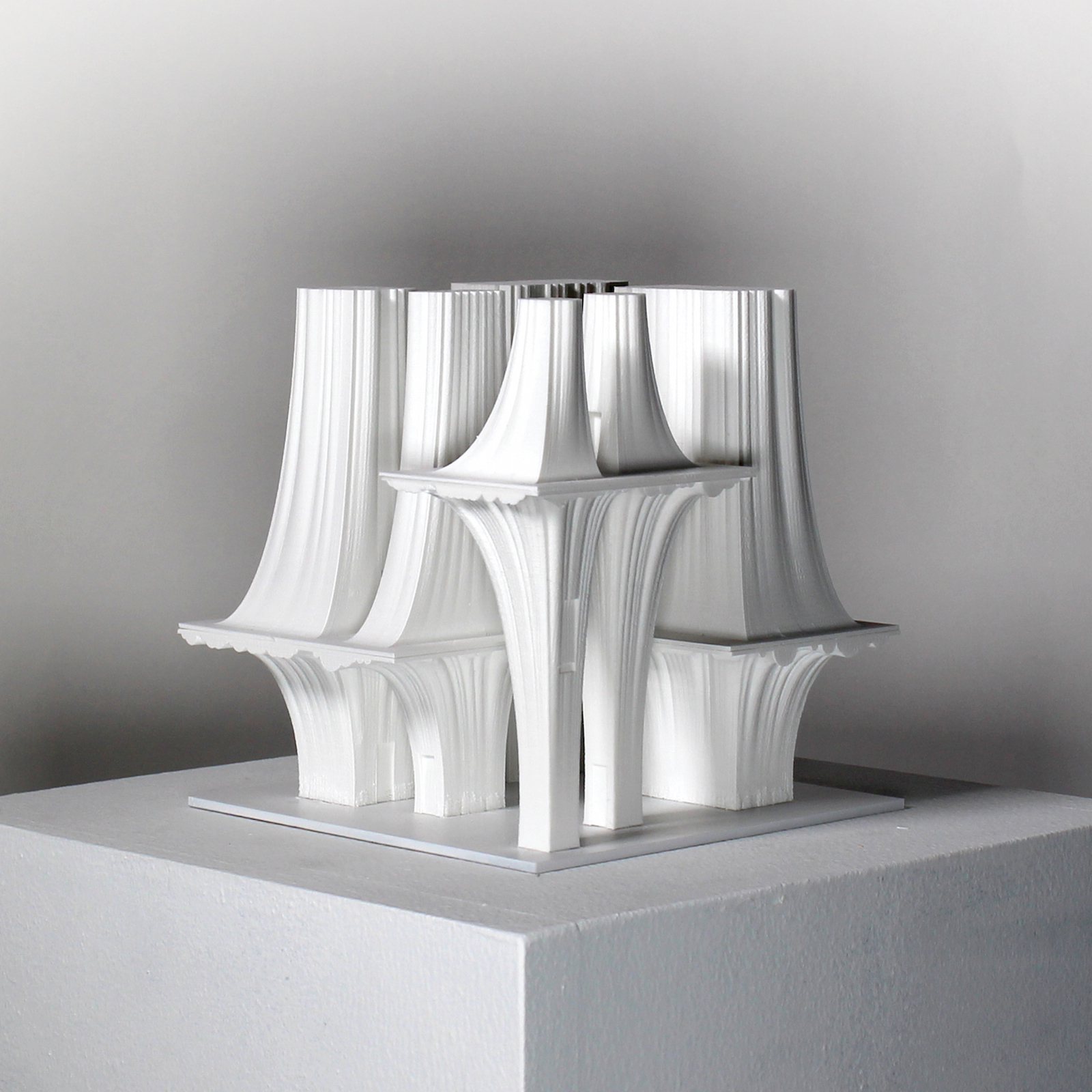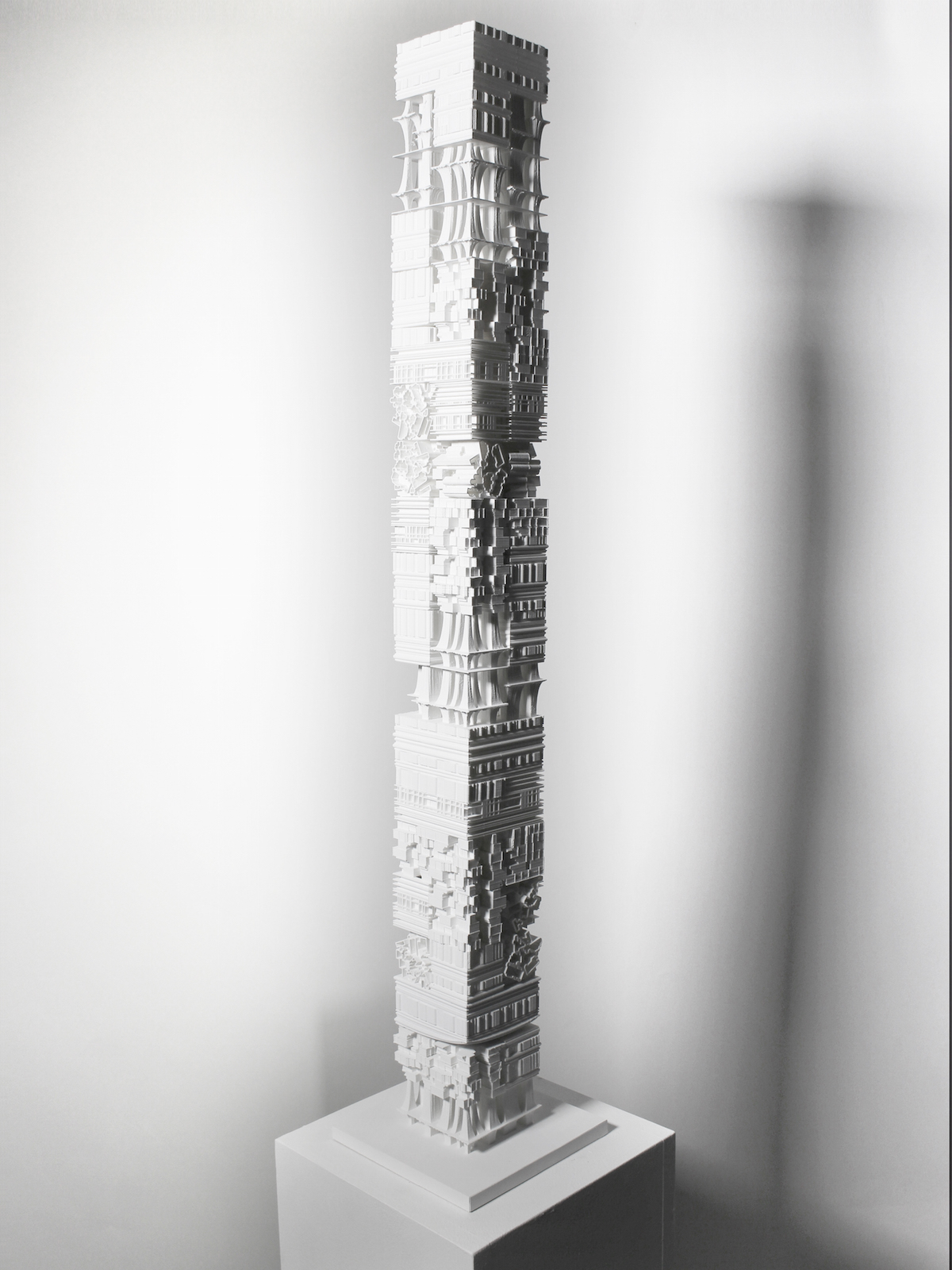The Irving Innovation Fellowship exemplifies many of the ideals at the heart of the Harvard Graduate School of Design community. The John E. Irving Family kick-started the GSD’s Grounded Visionaries campaign in 2013 with the establishment of the John E. Irving Dean’s Innovation Fund, from which the Irving Innovation Fellowship was inspired.
Over the past three years, the Fellowship has enriched the design research of a diversity of GSD students, enabling them to continue following threads of research, inquiry, and innovation beyond their time as GSD students, and offering a platform through which they can continue contributing to the School’s pedagogy and dialogue. A thesis or other capstone project often serves as the springboard for the Irving Innovation Fellowship. The Fellowship’s first recipient, Alex Timmer (MArch ’16), engaged the Fellowship after his graduation to interrogate materiality, fabrication, and assembly technologies, and to help conceptualize and refine the trajectory of his post-GSD practice.
During the GSD’s inaugural Fellowship Reception in 2017, Timmer thanked the Irving family for the “time and resources to coalesce all of my opportunities into my own design and research practice,” and for the opportunity to “help students develop a methodology of making.”
This year, four recent GSD graduates are extending their pedagogy and pursuing novel routes of research and discovery through the Irving Innovation Fellowship. Here’s a look at what they’re up to.
Ernest Haines (MLA ’18): Turnpike Metabolism: Reconstituting National Infrastructure Through Landscape
Since receiving the Irving Innovation Fellowship in Spring 2018, Ernest Haines (MLA ’18) has focused his recent work on three themes: expanding his prize-winning MLA thesis, “Turnpike Metabolism: Reconstituting National Infrastructure Through Landscape”; conducting computational experiments in vegetal morphology; and working on a comprehensive assessment and synthesis of digital tools and methods in service of design pedagogy. Haines’s work is girded by an emphasis throughout on sharing the knowledge he is uncovering.
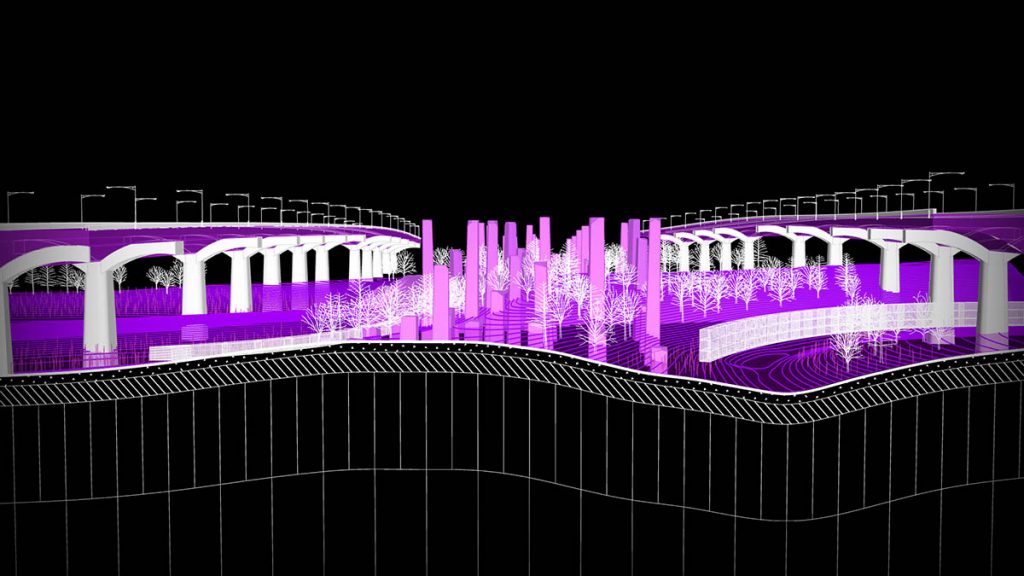
Advised by Associate Professor of Landscape Architecture Robert Pietrusko (MArch ’12), Haines and “Turnpike Metabolism” recall the importance of the highway within the field of landscape architecture, exploring the ways in which an active feedback loop between sense, design, construction, use, degradation, and replacement can redefine infrastructural metabolism both locally and nationally in the United States. Haines took on the U.S. interstate highway system as the site of inquiry; grounding the project in the Meadowlands in New Jersey, he proposes a set of standardized sections, located at specific typological conditions, which could be deployed nationally.
Central to this work, Haines observes, was the desire to allow the landscape to actively push back upon and define the way infrastructures are developed in the United States.
“Oftentimes, the frame of a school semester, and demands of a full course load, left unanswered a number of research questions I was interested in,” he says. “The Irving Innovation Fellowship has allowed me time and space to pursue those unanswered questions.”
Hence, Haines has been utilizing his Irving Fellowship time to develop an agent-based computational model of woody plant growth. Pulling heavily from the concept of the “Urpflanze” described in Wolfgang Goete’s The Metamorphosis of Plants, Haines has been able to source many materials from a variety of disciplines, ranging from the conceptual models of Valentino Braitenberg’s Vehicles: Experiments in Synthetic Psychology, to the botanically driven models by Francis Halle, et al., in their work Tropical Trees and Forests: An Architectural Analysis.
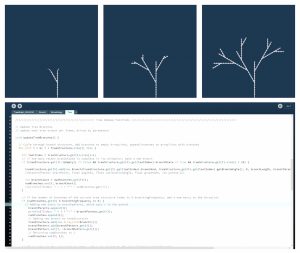
Atop ongoing research, Haines has been actively submitting his work to journals, competitions, and other external venues. Most recently, he received the Student Award at the AIANY + ASLANY Transportation + Infrastructure Design Excellence Awards.
The fellowship has also surfaced another avenue for sharing his knowledge—teaching.
Through his time as a fellow, Haines has collaborated with Pietrusko and Rosetta Elkin, Associate Professor of Landscape Architecture, within the Landscape Architecture Core III studio. In addition to offering desk crits and reviews, Haines has been developing and leading workshops that deal with digital tools and methodologies, exploring an interstitial space between GIS, 3-D modeling software, and animated media. He has also been working towards the translation of the digital tools used to represent students’ projects within the core pedagogic concerns and the theoretical underpinnings of the studio.
“While in school I was able to satisfy my interest in teaching through teaching assistant and tutor positions,” Haines notes. “However, as a fellow, I am able to embed myself and my research within the formation of core design studio pedagogy. This is something that I think is a rare and unique opportunity, and certainly not one I take for granted.”
Hyojin Kwon (MArch ’18): Death, Divorce, Down-sizing, Dislocation, and (Now) Display: A Self-Storage Center for a More Exhibitionist Future
Hyojin Kwon (MArch ’18) took up another form of well-used infrastructure—storage—for her Master in Architecture thesis “Death, Divorce, Down-sizing, Dislocation, and (Now) Display: A Self-Storage Center for a More Exhibitionist Future.” For her thesis, Kwon was advised by John May (MArch ’02), Director of the Master in Design Studies Program and Assistant Professor of Architecture, and Andrew Witt (MDes ‘02/MARch ’07), Assistant Professor in Practice of Architecture.
With this thesis project, Kwon argues that, in a consumer culture where people increasingly identify with their possessions and keep amassing more and more things, the concept and typology of self-storage centers are ripe for reconsideration. Kwon gestures toward a new architectural typology for self-storage centers, blurring the distinctions between storage space, personal curation, and cultural display. Kwon’s storage centers would provide users with different storage types depending on need or desire to access or display possessions. The private can become public, and vice versa.
“Public exhibition of personal possessions achieves an institutional character for the self-storage center, in which objects gain an architectural importance,” Kwon observes. “Constant curation of objects resists hoarder culture, instead asking what belongs in storage when the previously dark and hidden becomes bright and showcased. This specific architecture does not subordinate its contents; rather, it provides a framework into which objects, people, and memories breathe life.”
If Kwon’s thesis offered a speculative proposal, then her Irving Innovation Fellowship research is bringing into clarity the specific typologies and forms needed to realize these alternative storage systems.
In her fellowship thus far, Kwon has engaged cutting-edge technology that enables reciprocal, three-dimensional, formal information exchange between physical objects to be stored and digitally-modeled environments. She is also using 3-D-scanning techniques to digitize storage items, and then implementing 3-D-printing techniques to explore strategies for the fabrication, materiality, and representation of her proposed typology. In order to further develop the unique architectural forms needed for this new form of self-storage center, the physical behavior of the objects is simulated through digital operations that include piling, stacking, draping, and packing, each of which is driven by software-based physics engines.
This consistent feedback between the operations of digitalization, simulation, and materialization processes will ultimately culminate in the development of prototypical architectural objects, Kwon explains. She hopes this research will result in a fabrication approach that can be scaled for implementation within architectural practice itself.
The time, the continued access to resources like the GSD’s Frances Loeb Library and Special Collections, and the open-ended nature of the Irving Innovation Fellowship have enabled Kwon to layer these fascinating and important observations atop her foundational thesis. And, like Haines, Kwon has appreciated the opportunity to integrate studio pedagogy with digital representation and fabrication, and to extend working relationships with faculty advisors and mentors.
“This fellowship encourages research through design, which has made it possible for me to develop my body of work,” Kwon says. “Fellowships like this create a platform for academic and professional careers, and provide emerging scholars with the much-needed bridge between theory and practice.”
Youngjin Song (MDes ’17): Flashback
Recent Master in Design Studies graduate Youngjin Song (MDes ’17) collaborated with current MArch candidate Dohyun Lee (MArch ’20) on Flashback, proposing a cylindrical screen-tower with internal cameras, intended for a public space or plaza (the project was a finalist in Seoul’s “TODAY: Public Art Installation Competition” for Seoul City Hall Plaza). Flashback video-records its surrounding scenery on a continuous basis while also looping the footage it gathered 12 hours prior, and, in turn, capturing viewers’ reactions to the looped video. In other words, visitors glimpse the activity that took place 12 hours ago where they are standing, at the exact solar opposite of the time at which they encounter the piece; at sunset, they view a recording of the preceding sunrise.
With Flashback (originally titled Someone in the Crowd), Song and Lee aim to awaken viewers to the shared and continuous nature of space, and the fact that the viewers themselves are part of this shared nature. They also explore the power, flexibility, and implications of archiving and technology. Flashback generates a literal archive of its surroundings, but also provokes uncertainty and viscerality, and perhaps evokes questions around surveillance, artificial intelligence, and the strengthening grip of technology. Song and Lee developed Flashback as an independent-study project.
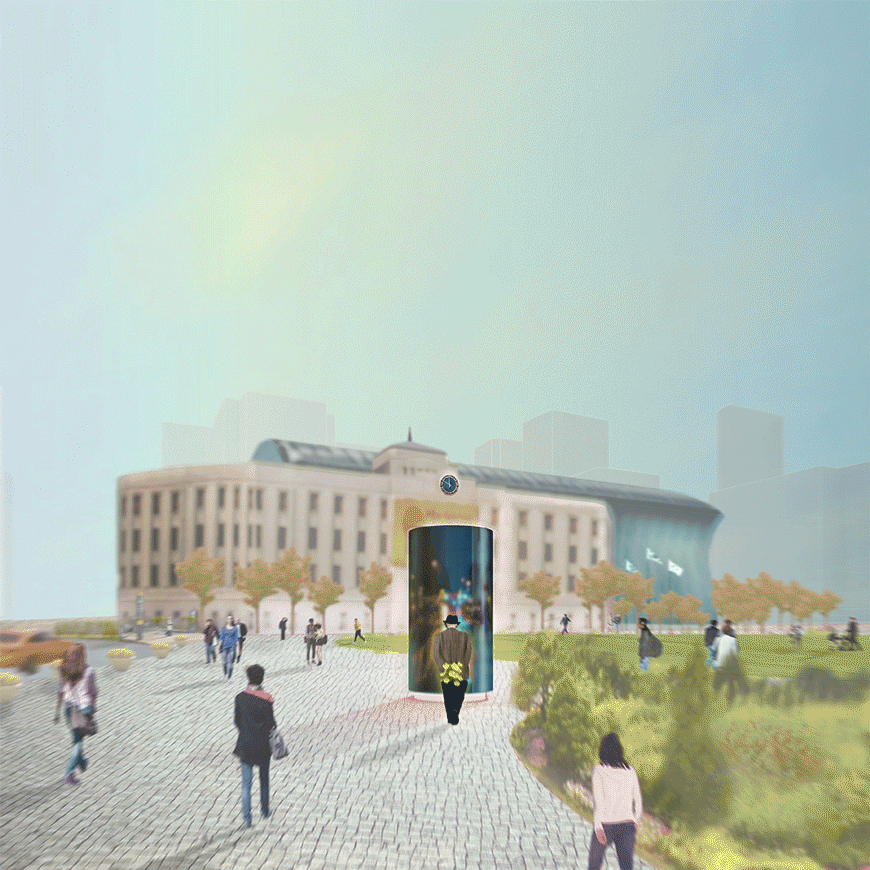
The Irving Innovation Fellowship has enabled Song to continue this exploration. Song has focused on broadening the scope of the Master in Design Studies program’s Art, Design, and the Public Domain (ADPD) concentration, collaborating especially with the GSD’s Silvia Benedito (MAUD ’04), Associate Professor of Landscape Architecture; Krzysztof Wodiczko, Professor in Residence of Art, Design and the Public Domain; and Malkit Shoshan, Lecturer in Urban Planning and Design—all of whom are co-area heads of the MDes program’s ADPD concentration.
“The Irving Fellowship has provided me with unique opportunities to work closely with GSD faculty and students,” Song says. “It has been meaningful for me to help both sides communicate effectively and to promote support between them.”
The fellowship term has also allowed Song the breathing room to deepen her design practice, with a focus on exploring how an artist can mediate between objects and the public. Among other activities, she recently launched a contemporary gallery for young artists, and is collaborating on an exhibition about memory.
Enrique Aureng Silva (MDes ’18): disaster response in Mexico
Recent MDes graduate Enrique Aureng Silva’s (MDes ’18) thesis proposed, through a reinterpretation of the concept of liminality, that earthquakes, and specifically the repetitive nature of earthquakes in Mexico, should be seen as an opportunity for change: change, he writes, in the interpretation of certain historical accounts, change of heritage discourses, change in the relation between historic preservation and historic buildings, and change in the structures of power that dictate the narratives associated with them.
“All of these should be questioned in order to create new architectures, new urbanisms, and new social interactions that, while still reflecting on the past—on the physical and non-physical fragments left by the catastrophes—use the historic fabric not as a nostalgic element to lament loss, but as a starting point for where to imagine new alternatives,” Silva writes.
Through the Irving Fellowship, Silva has been working with Diane E. Davis, Charles Dyer Norton Professor of Regional Planning and Urbanism and Chair of the Department of Urban Planning and Design, to follow threads of his thesis research in pursuit of novel, alternative responses to natural catastrophes, specifically alternatives to historic preservation. One area of focus is the 2017 earthquakes that affected the Isthmus of Tehuantepec in southern Mexico.
Silva and Davis are working toward a synthesizing publication or exhibition, intended to be released in Spring 2019. The fellowship has also afforded Silva the opportunity to collaborate on Fall 2018 option studio “The Agency of Mezcal in the Oaxaca Valley,” alongside professor Elisa Silva.
Looking Ahead
The Irving Innovation Fellowship has grown since its inception, and now empowers a handful of exceptional GSD students each year to extend their Harvard research and pedagogy beyond Commencement Day. The GSD looks forward to the program’s growing momentum and the continued work and impact of those projects it has empowered thus far.
